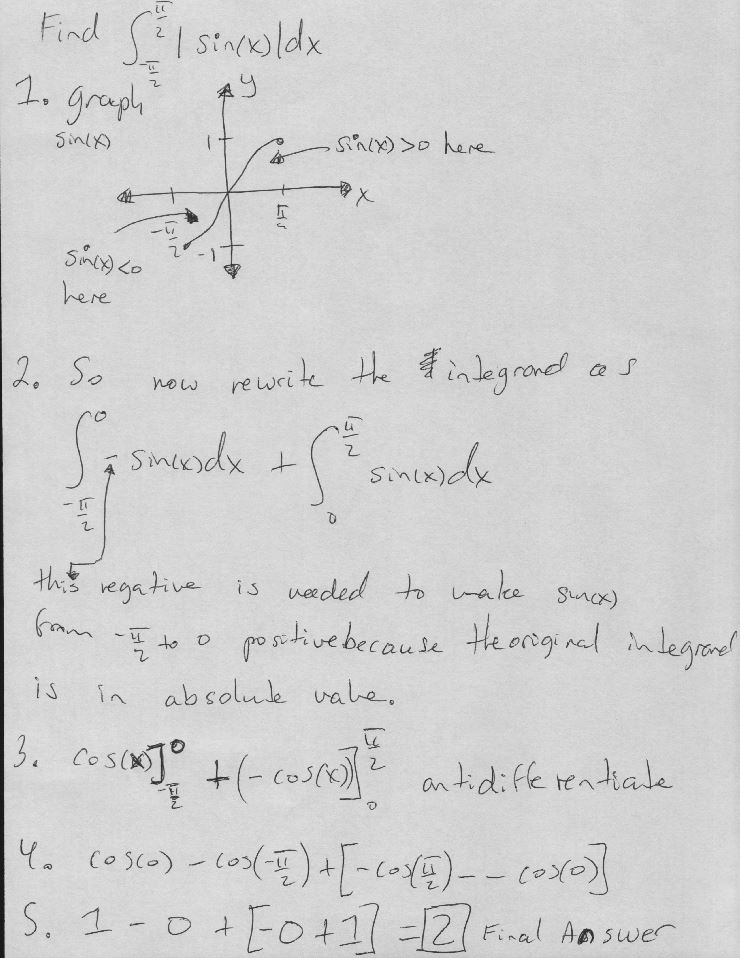Evaluation of Integral of sin(x) from -π/2 to π/2
We aim to evaluate the following integral:
∫ from -π/2 to π/2 of sin(x) dx
Step 1: Find the Antiderivative
The antiderivative of sin(x) is -cos(x).
Step 2: Evaluate the Integral
We evaluate -cos(x) at the upper and lower limits and subtract:
-cos(π/2) + cos(-π/2) = 0 + 0 = 0
Final Result
The value of the integral ∫ from -π/2 to π/2 of sin(x) dx is 0.
Graphical Explanation for the Integral of sin(x) from -π/2 to π/2
We previously found that the integral:
∫ from -π/2 to π/2 of sin(x) dx = 0
Graphical Reasoning
The function sin(x) is symmetric about the y-axis. This means that for every positive value of sin(x) from 0 to π/2, there is a corresponding negative value from 0 to -π/2.
When you graph sin(x), you’ll notice that the area under the curve from 0 to π/2 is exactly the same as the area above the curve (or below the x-axis) from -π/2 to 0. These two areas cancel each other out, leading to a net area of zero.
Final Result
Graphically, it makes sense that the integral ∫ from -π/2 to π/2 of sin(x) dx is 0 because the positive and negative areas under the curve cancel each other out.

